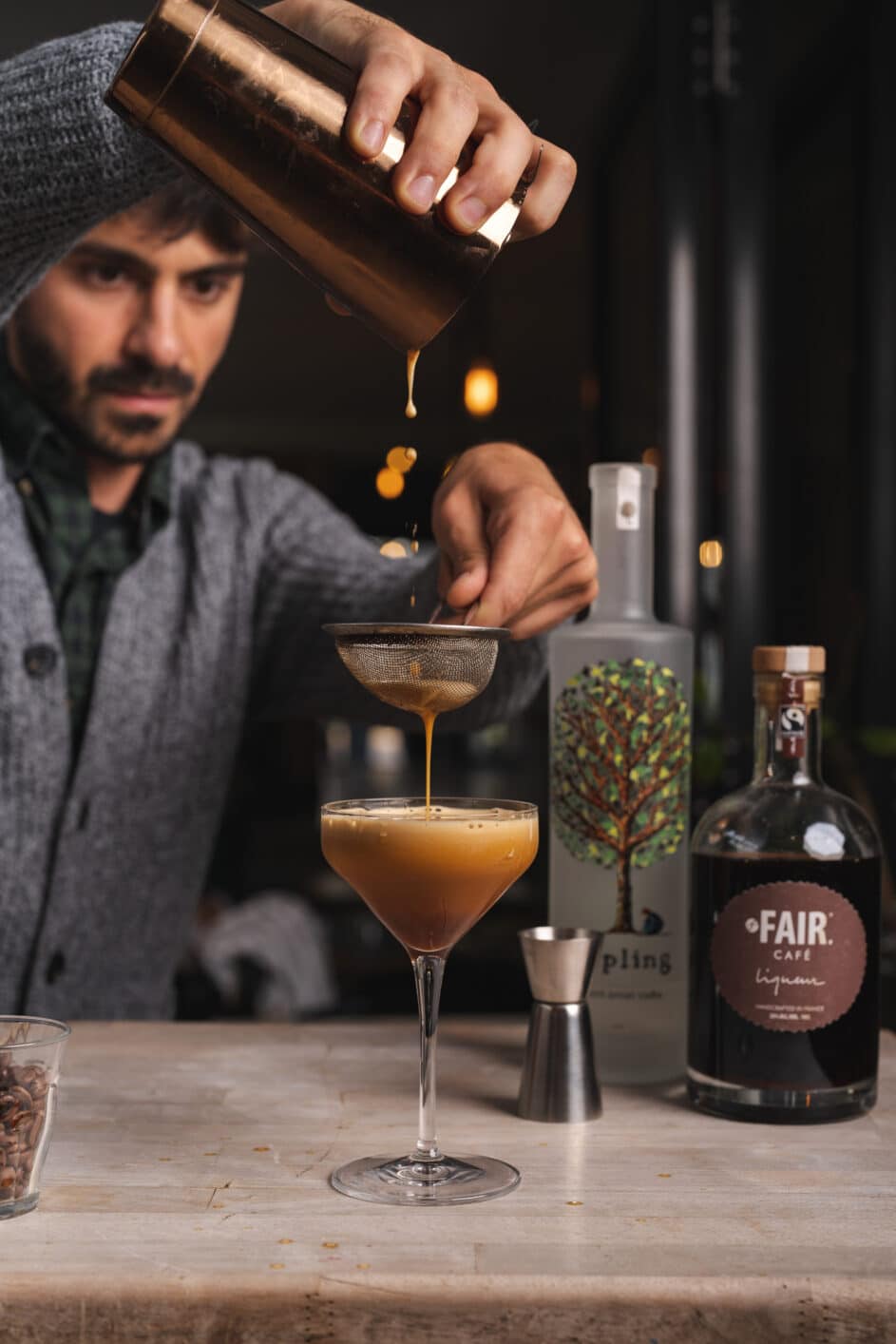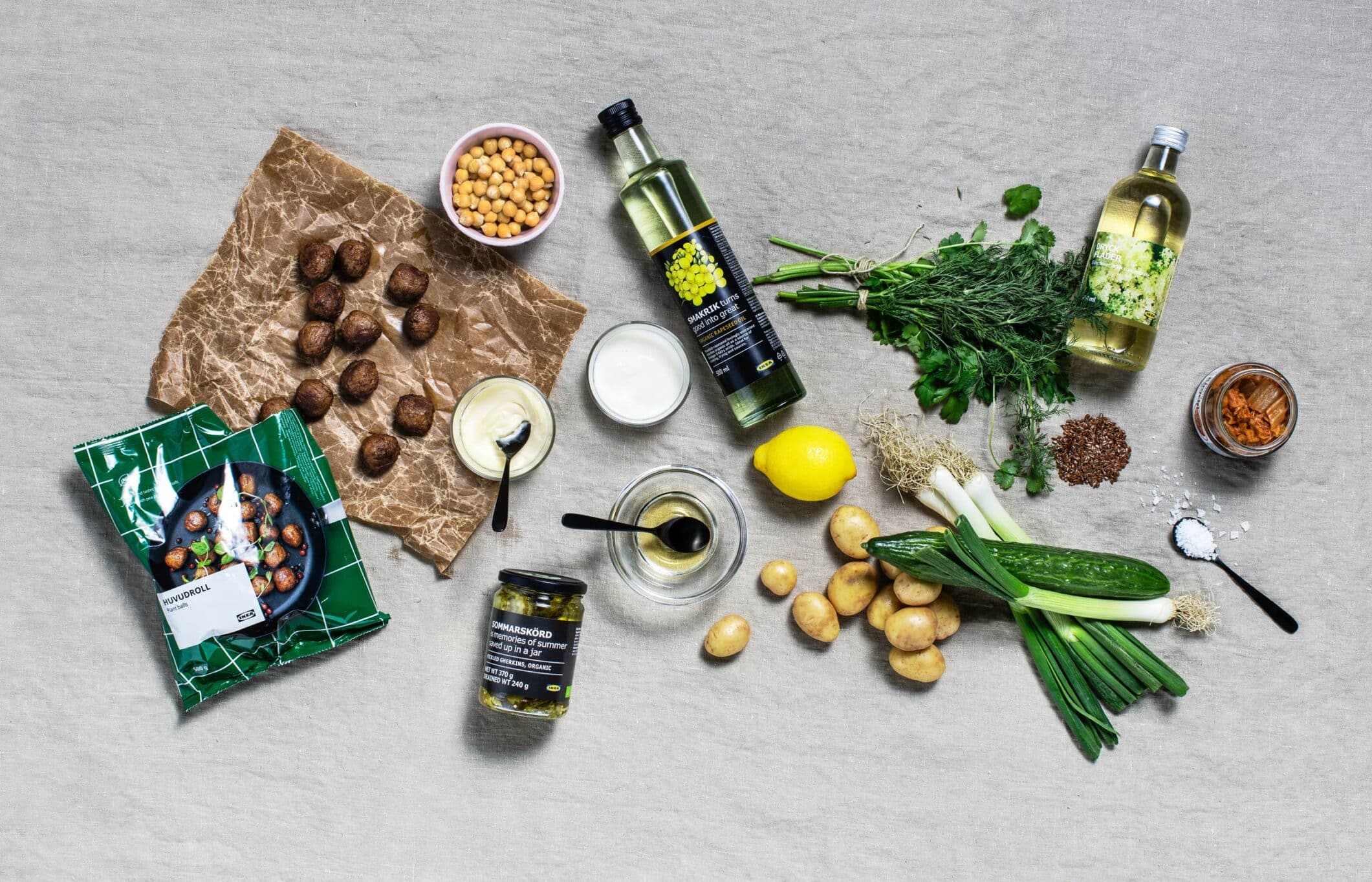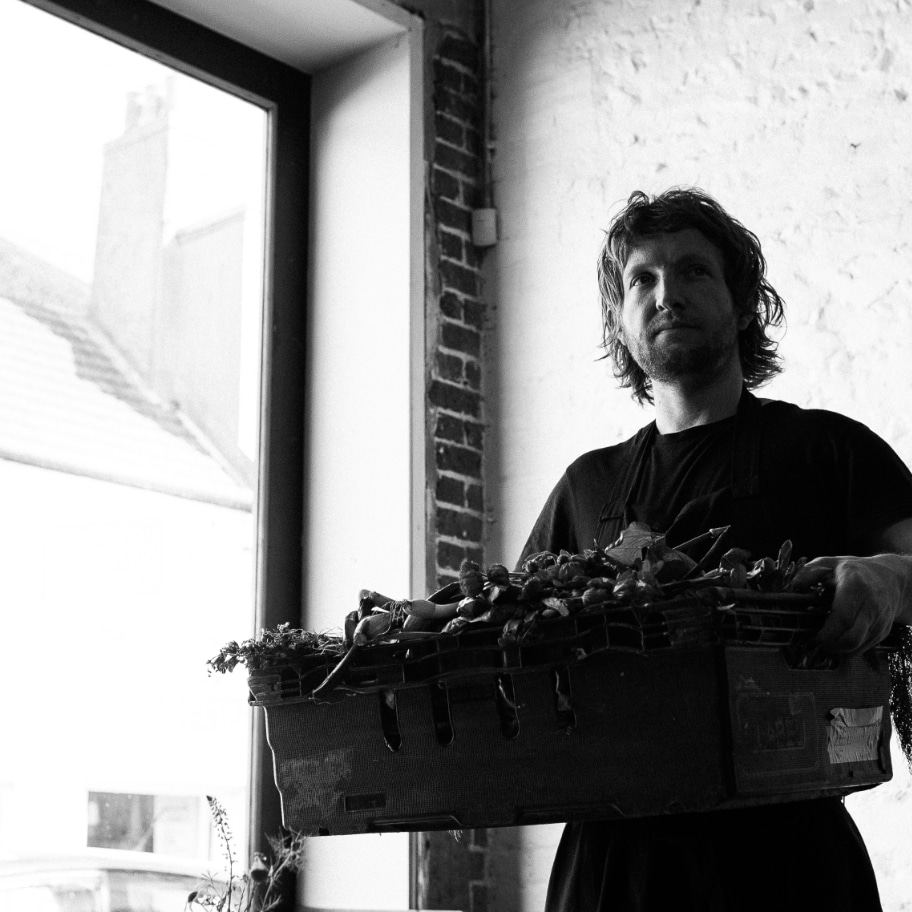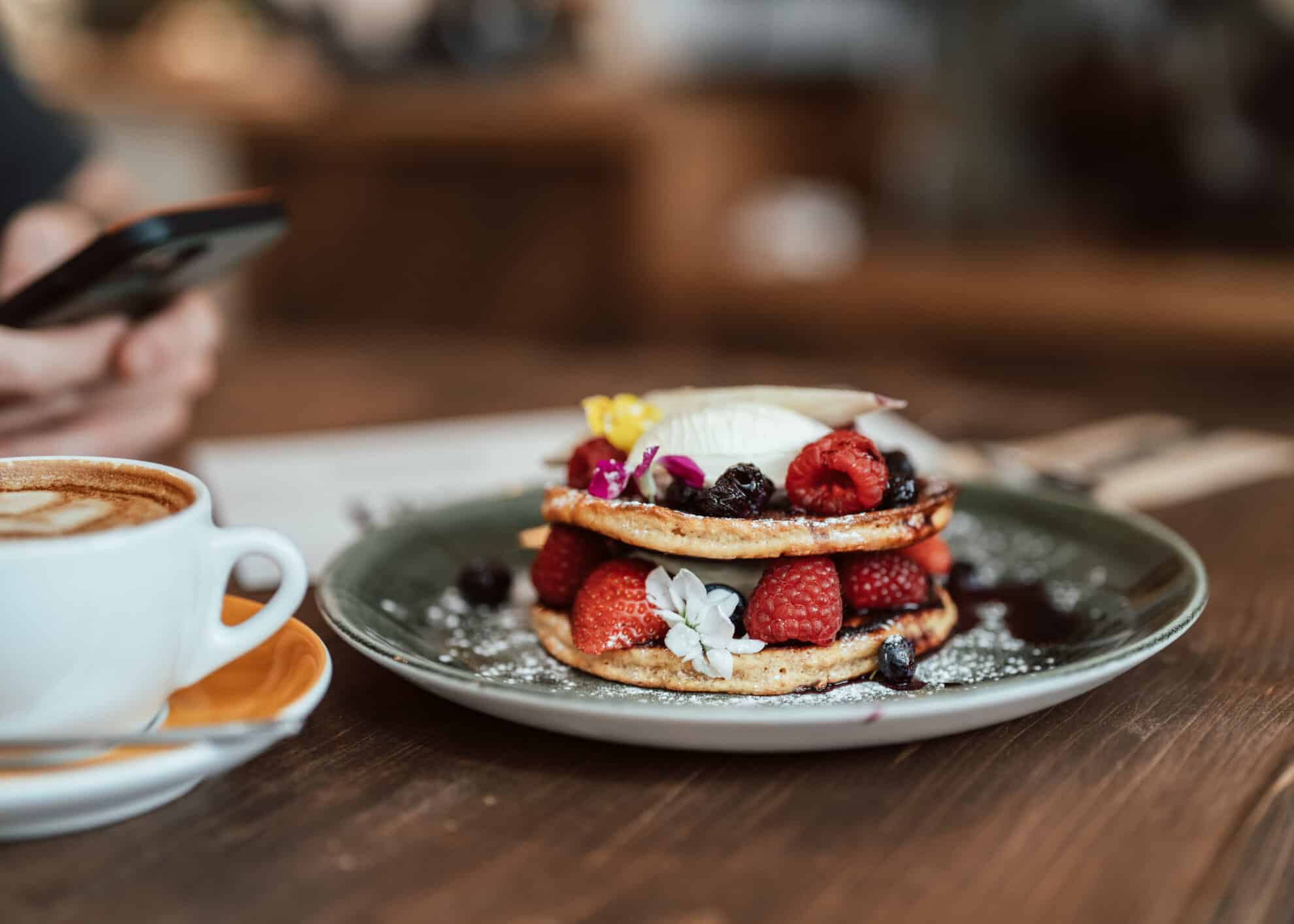The era of ‘climate positive’ eating out is here. As we scramble to reduce our impact on the planet, a new generation of cafés and restaurants is making the task easier – and more enjoyable – for us.
Tim Grant is an unlikely eco-warrior at first glance. Looking at him, you might guess that he’s an army officer on leave. He has the confident demeanour and effortless eloquence of someone who may have more in common with a St.John than a Swampy. But, having indeed once been a Major in the army, serving with the Pathfinders in Afghanistan, he’s now changed battlegrounds to create the first climate positive restaurant in the UK, possibly even the world.
W5 Collective, Grant’s newest café-restaurant in Ealing, West London, opened in September with a focus on sustainability, quality produce and community. Its mission is to make it easy to turn small everyday habits into collective positive change by showing people that you can enjoy quality food and drink that are good for the planet and taste delicious at the same time.

Tim Grant, MD of Canteen Collective.
As an example of how this works in practice, Grant explains. “We’ve virtually eliminated single-use plastic. But we work with Surfers Against Sewage and Ocean Bottle to compensate if we do need to use any. We extract five times the amount of single-use plastic out of the ocean as we use. And we plant a tree for every kilo of coffee sold [partnering with NGO On A Mission].”
He explains that his business is trying to harness the cumulative impact of lots of small actions. “My approach is to ask what can we do a little better every day and question how do we reduce the impact?”
Rather counter-intuitively, the more people come to eat and drink at W5 Collective, the more positive impact can actually be delivered. So Tim Grant, who now employs some 50 people across Canteen Collective, is laser focused on ensuring the best possible experience for customers.
The planet-conscious menu focuses on provenance and seasonality. With beautiful fresh dishes, natural wines and a curated drinks menu from a local craft brewery and carefully selected distilleries. The brunch menu includes classics such as Almond Pancakes and Eggs Benedict, as well as British cheese boards and small plates of seasonal produce.
Not be missed is the Espresso Mar’tree’ni paired with espresso straight from the machine, FAIR Café liquor and British Sapling vodka. Each item is sourced to maximise its positive impact and a tree is planted for every Mar’tree’ni sold.

A barman pouring an Espresso Mar’tree’ni at W5 Collective.
There is an emphasis on providing customers with great food choices, but with an eye on the underlying environmental impact of the menu.
“Our desired approach is to offer a flexitarian diet,” says Tim Grant. “We’d like to start using more shellfish because the nutritional density and sustainability is higher than many other forms of protein. We want to find other more sustainable options.”
Local growers and artisans are used wherever possible. Coffee is sourced from a single farmer in Brazil helping to maintain a consistently excellent product as well as support the farming community by committing to a much larger portion of their crop. Fruit and vegetables are locally sourced from Smith and Brock and the milk comes from Brades Farm, where the herds of cows are fed garlic and citrus to reduce their methane output.
It all sounds wonderful, but there are real challenges. If you get the tone wrong, “you risk being preachy and isolating potential customers,” explains Grant.
And the hardest thing, he admits, is “profitability, when you’re having to compete against the mass market and people’s desire remains for ‘cheap’ products”. He makes speech marks in the air around the word cheap to infer the higher cost to the earth of many of these choices.
Another difficulty is ensuring that the supply chain adheres to expectations. “We’re trying to reduce the links in the supply chain,” Grant says. “We would like to get to a position where we can audit everything but we also can’t make too many demands on individual suppliers. It’s better that, if they have to use plastic, we get delivery with the plastic still on so we can measure it, rather than say they must deliver without it and just remove the plastic in their warehouse before it comes to us.”
W5 Collective has deliberately chosen to work with only 23 suppliers to ensure strong working relationships that fit in with their values and expectations.
The landscape for recycling is also complicated, with different requirements and processes in different places across the country. Also certain products can’t be recycled in certain places, which is confusing for consumers and tricky for business owners. For example, Tim Grant says he was looking to buy a large quantity of recyclable plastic take-away bags and only found out at the last minute that the Dutch Pack bags he chose are recyclable across Europe but not in London. “We were about to spend £20k inadvertently on single-use plastic,” he says, frustrated.
A wider climate positive movement is growing
The climate positive food movement is growing across the world. A real pioneer was Sweden’s Max Burgers, who introduced its climate positive burgers in 2018 and have been acknowledged as providing a catalyst to many other brands.
The company explains: “We plant trees that absorb and store carbon dioxide from the atmosphere as they grow. Not only do we carbon offset all the emissions from all our food, we go further to capture the carbon dioxide equivalent of another 10% of our emissions. This means we are helping reduce the overall levels of greenhouse gases in the atmosphere.”
Another Swedish company, IKEA, has also set out its intention to become climate positive. Food (including those iconic meat- or veggie-balls) accounts for 3 per cent of their carbon emissions currently and they’ve set a target to increase the plant-based proportion of their menu to half by 2025.

IKEA is increasing the proportion of plant-based food it sells as part of a move to become climate positive. Picture from IKEA.
In their announcement, Panera explains that reaching this climate positive goal equates to removing approximately 2.4 million metric tons of carbon dioxide equivalents each year as compared to their 2019 greenhouse gas baseline. This is equal to the amount of carbon sequestered by 2.96 million acres of forest per year, an area 14 times the size of New York City.
The definition of climate positive, however, seems ripe for green-washing. McDonalds proudly states on its website that it is working to be ‘climate positive’. However, its actual plan is to work towards net zero emissions by 2040, rather than going the extra mile and achieving more than carbon neutrality. Yes, they are taking positive steps to help the climate; but no, they are not setting out to be ‘climate positive.’
The WWF is working on an initiative to encourage more major companies to take the climate positive step. “We recognise that we need a clear understanding of what this new ‘climate positive’ term really means in practical terms,” they say. “Working closely with a small group of companies including IKEA, H&M and MAX Burgers, we have started to craft additional guidance that would help companies do ‘climate positive’ right. We want more companies to join us in this effort too. It is important for us that there is credible guidance, backed by science and filled with ambition.”
What are other restaurants doing?
Not every restaurant can be fully climate positive, yet. So what are some other ways that innovators in the scene are aiming to reduce their impact?
You won’t find a bin in sight at the zero-waste, fine-dining restaurant Silo. Since its origins in 2011, chef Doug McMaster built it up to become the world’s first zero-waste restaurant, now based in east London.
McMaster outlined his approach in a recent interview: “The concept of Silo is to achieve a closed loop system. We’ve cut out the middlemen so in the kitchen we get the ingredients in their natural form, directly from the source, with no plastic or single-use packaging. We use every part of every material that comes through the door and don’t throw anything away, whether food or materials.”
Again, being zero-waste takes a huge effort. “In addition to reducing waste by cutting out the middleman, at Silo we also reclaim more challenging materials by adopting a ‘Nu Waste’ philosophy; Nu Waste being the idea that materials can be re-born,” continued McMaster.
“A good example of this philosophy would be to turn veg scraps into treacle or even crushing wine bottles then melting into fine porcelain crockery. Every scrap becomes something new, something precious. We’re well known for being the restaurant without a bin, but really it’s become second nature.”
“We adopt a creative approach to cooking by using everything. Every scrap becomes something, for example carrot tops make a delicious pesto, the best fermentations and pickles can be made using leftover veg and at silo we make an amazing dark treacle syrup using vegetable scraps.”

Doug McMaster is founder of London’s leading zero-waste restaurant Silo. Picture from Silolondon.com
Reducing food waste is a specific area that restaurants can choose to focus on for the good of the planet. When it comes to fighting food waste, the solutions are simple: eat local, more seasonally and don’t waste ingredients. It’s something the founders of Native restaurant, in Mayfair, London, have been doing for years, with a big dollop of creativity thrown in.
Imogen Davis and Ivan Tisdall-Downes set up Native restaurant, in their original Neal’s Yard location in 2016, and set out to champion the highest-quality seasonal British ingredients – and try not to waste anything. Five years later, they have a new home at Browns in Mayfair (via Southwark on the way), going from strength to strength and with a great reputation among foodies for their imaginative use of ingredients.
The menu is seasonal, down to the day, Imogen Davis says in a recent interview – something that has created some challenges, but is ultimately their raison d’etre. “We very much designed the menu based on seasonality, to the day. For example, if one of our suppliers, say a fishing boat that we use, doesn’t go out in a storm, then that will be reflected on the menu and we wouldn’t serve fish that day. Obviously, we could have sourced fish from further afield, but that defeats the object. The land takes the menu to us.”
Their signature dishes include ‘marrowmel’, a bone marrow and white chocolate caramel dessert set inside a marrow bone, and the pair have found other creative ways to make the most of their ingredients.
Trimmings are turned into ‘waste-free snacks’, creative little bites using up morsels that wouldn’t necessarily make it into the main dishes. These could include fish trim toast with rhubarb hoisin and fermented potato waffles, made with potato trimmings, and served with chicken liver parfait. Carrot tops, usually relegated to the bin, gain a new life as a tasty tempura garnish atop their venison dish. “There is no need to throw them away and they add a good texture to the dish,” Davis said.
With more climate positive and zero-waste eateries expected to pop up, the onus will shift over time to how we can adopt the same behaviours at home. But if it all sounds like too much hard work, just head out to your friendly, local, climate positive restaurant for a pleasure positive experience.
Doug McMaster’s top tips for living a zero-waste lifestyle at home
- Stop buying cling film and foil; instead invest in reusable containers with decent lids, metal covers for your baking trays, beeswax cling film and reusable rubber mats.
- Always make a shopping list so you know exactly how much you need of everything. It can also help to reduce those impulse buys of things you don’t actually want or really need.
- Before cooking, make sure you weigh out your ingredients in line with the amount of people you’re cooking for.
- Think creatively about the food you’re cooking; you don’t need to throw away vegetable tops, instead you can incorporate them as an ingredient.
- Use vinegar to sanitise surfaces instead of chemical products.

